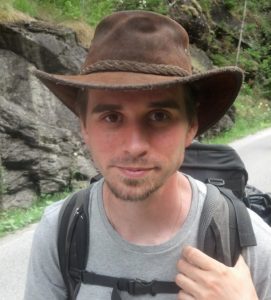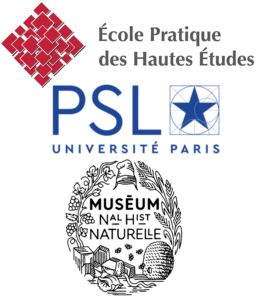M2 internship opportunity in evolutionary population genomics
Title
Genomics of adaptation using haplotagging sequences from 14 viviparous lizard populations
Supervision
SupervisorPierre de Villemereuil (MCF EPHE)
E-mail : pierre.de-villemereuil@mnhn.fr
Phone : 0140798037
Website : https://devillemereuil.legtux.org
Co-encadrant
Julien Cote (DR CNRS)
E-mail : julien.cote@univ-tlse3.fr
Website : https://juliencote.fr
Organisation
Institut de Systématique, Évolution, Biodiversité (ISYEB),
Muséum National d’Histoire Naturelle (MNHN),
57 rue Cuvier, 75005 PARIS
Website : https://isyeb.mnhn.fr
Description
To respond to global change, a species with a low dispersal capacity such as the European common lizard (Zootoca vivipara) can acclimate through phenotypic plasticity or adapt through genetic evolution. In order to anticipate the existence, extent and proportion of these two types of response, it is possible to compare existing populations over an environmental gradient, particularly using elevation and temperature (‘space-for-time’ approach). As part of the DevOcGen project, funded by the Occitanie region, females from 14 populations were sequenced using a linked-sequence method (enabling haplotypes to be reconstructed) called haplotagging. The aim of this internship is to use these data, including haplotype phase data, to study inter- and intra-population genetic diversity, and to link demographic history, environment and adaptation between these populations. The aim will be to describe the inter- and intra-population population structure, and to link it with contemporary demographic data on these populations; then to study selection signals in the genomes, particularly in relation to environmental variables obtained on these populations.
Objectives
The aims of the internship are (i) to characterise the population structure between the different populations; (ii) to characterise the genetic diversity within populations, particularly populations undergoing demographic decline and (iii) to detect regions of the genome potentially linked to local adaptation between populations, with or without the use of environmental data.
Methods
Data analysis; bioinformatics; population genomics; genomic scans for selection. The data will be available at the start of the internship.
Context
The internship will take place from January to June 2025 at the Institut de Systématique, Évolution, Biodiversité (ISYEB), at the Jardin des Plantes of the Muséum National d’Histoire Naturelle, in Paris. It will be supervised by Pierre de Villemereuil (MCF EPHE, ISYEB, Paris) and co-supervised by Julien Cote (DR CNRS, CRBE, Toulouse). It will be possible to prolong the internship by taking part in a field study on the European common lizard populations in the Cévennes in the summer of 2025. This could be followed by a thesis funded as part of the EvoGenArch ERC.
References
de Villemereuil, P., Frichot, É., Bazin, É., François, O., & Gaggiotti, O. E. (2014). Genome scan methods against more complex models: When and how much should we trust them? Molecular Ecology, 23(8), 2006–2019. https://doi.org/10.1111/mec.12705
Dupoué, A., Blaimont, P., Angelier, F., Ribout, C., Rozen-Rechels, D., Richard, M., Miles, D., de Villemereuil, P., Rutschmann, A., Badiane, A., Aubret, F., Lourdais, O., Meylan, S., Cote, J., Clobert, J., & Le Galliard, J.-F. (2022). Lizards from warm and declining populations are born with extremely short telomeres. Proceedings of the National Academy of Sciences, 119(33), e2201371119. https://doi.org/10.1073/pnas.2201371119
Rellstab, C., Gugerli, F., Eckert, A. J., Hancock, A. M., & Holderegger, R. (2015). A practical guide to environmental association analysis in landscape genomics. Molecular Ecology, 24(17), 4348–4370. https://doi.org/10.1111/mec.13322
San-Jose, L. M., Bestion, E., Pellerin, F., Richard, M., Di Gesu, L., Salmona, J., Winandy, L., Legrand, D., Bonneaud, C., Guillaume, O., Calvez, O., Elmer, K. R., Yurchenko, A. A., Recknagel, H., Clobert, J., & Cote, J. (2023). Investigating the genetic basis of vertebrate dispersal combining RNA-seq, RAD-seq and quantitative genetics. Molecular Ecology, n/a(n/a). https://doi.org/10.1111/mec.16916
Meier, J. I., Salazar, P. A., Kučka, M., Davies, R. W., Dréau, A., Aldás, I., Power, O. B., Nadeau, N. J., Bridle, J. R., Rolian, C., Barton, N. H., McMillan, W. O., Jiggins, C. D., & Chan, Y. F. (2021). Haplotype tagging reveals parallel formation of hybrid races in two butterfly species. Proceedings of the National Academy of Sciences, 118(25). https://doi.org/10.1073/pnas.2015005118

